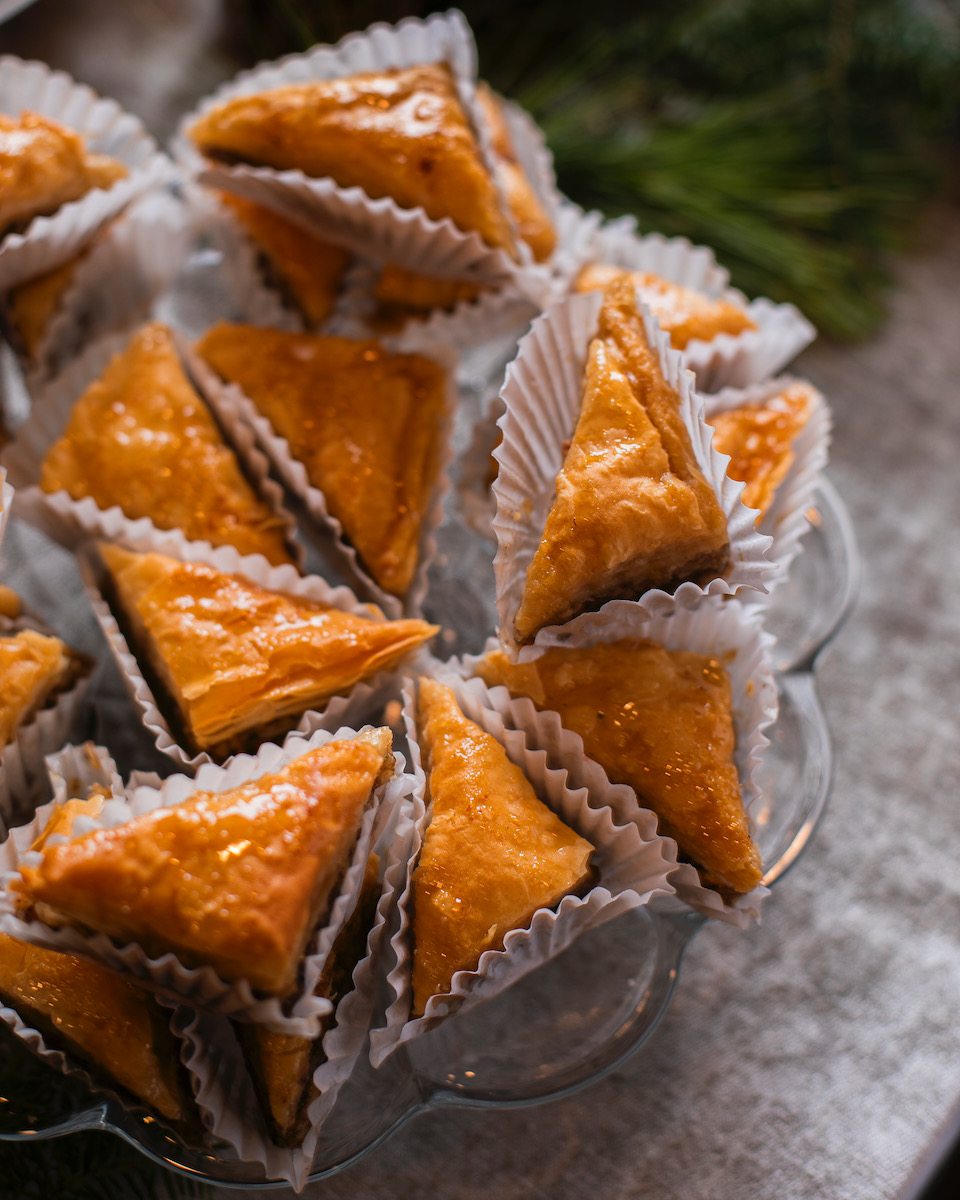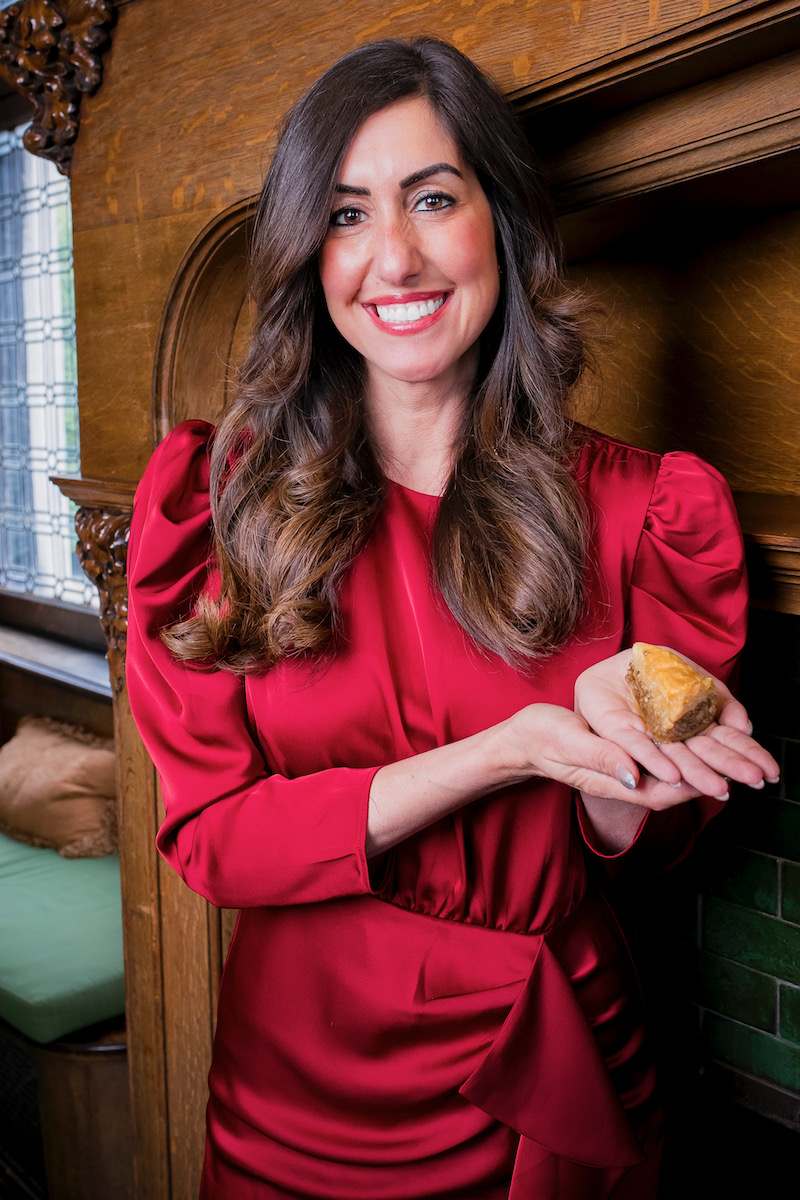Maria Dudek brought this baklava to our cookie table competition. Whether it’s a cookie or not is a little bit of a technical question, but we’ll take any excuse to eat a delicious phyllo dough pastry. Learn how to make this recipe yourself! For another recipe from Maria Dudek, try our Orange Baklava Sundae.

Where Does Baklava Come From?
Historians believe baklava came from the Middle East, with its roots likely tracing back to ancient civilizations such as the Assyrians. However, it became more widely recognized and refined during the Ottoman Empire, which spread the dish across its various regions, including Turkey, Greece, and the Balkans.


Baklava
Description
Sweet, flaky decadence awaits.
Ingredients
For the Pastry:
- 2 boxes of phyllo dough #4 (2 pounds)
- 1 lb salted butter
For the Filling:
- 2 lb walnuts, ground
- 1/2 cup sugar
- 2 tsp ground cinnamon
For the Syrup:
- 4 cups water
- 6 cups sugar
- 1 large honey dollop
- ½ lemon, juice and rind
- 2 cinnamon sticks
Instructions
- Preheat the oven to 325 degrees. Let the phyllo dough thaw to room temperature. Open one box at a time, so the dough doesn’t dry out.
- Combine all syrup ingredients, including the lemon rind. Bring to a gentle boil for 10 minutes, mixing often. Let the syrup cool completely.
- Put walnuts in the food processer and grind. Add the cinnamon and sugar. Separate into 3 equal sections (about 2 cups each). Set aside.
- Then, melt the butter in a measuring cup or saucepan. Brush a thin layer of melted butter to the bottom of an 11 in x 18 in pan. Then begin to layer a sheet of phyllo and butter, one at a time. Continue until there are 6 sheets of phyllo dough remaining from the first pound of phyllo.
- Spread 1/3 of the walnut mixture across the phyllo evenly. Sprinkle the nut mixture lightly with melted butter, then add another layer of phyllo and brush that layer with butter. Add two more layers of phyllo the same way.
- Add another 1/3 of the walnut mixture evenly. Sprinkle with melted butter and add 3 sheets of phyllo brushed with butter. Add the last 1/3 of the walnut mixture.
- Then, open the second box of phyllo. Layer and butter the entire pound of phyllo dough. Lastly, brush the top of your baklava with butter generously.
- Depending on how many pieces you want, cut the baklava into 6×4 inch or 7×5 inch square pieces. Then cut each square diagonally to make triangles.
- Bake at 325 degrees until golden brown, approximately 40 minutes. Once it is finished, leave the baklava out to cool. Next, remove the lemon rind and cinnamon sticks from the syrup and slowly pour the syrup evenly onto the baklava to allow it to soak-in (there will be more syrup than needed). If possible, let the baklava soak overnight. Enjoy!
Recipe by Maria Dudek
Styling by Anna Franklin
Photography by Dave Bryce and Laura Petrilla
Subscribe to TABLE Magazine‘s print edition.
